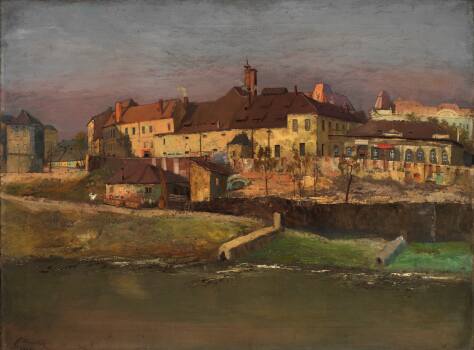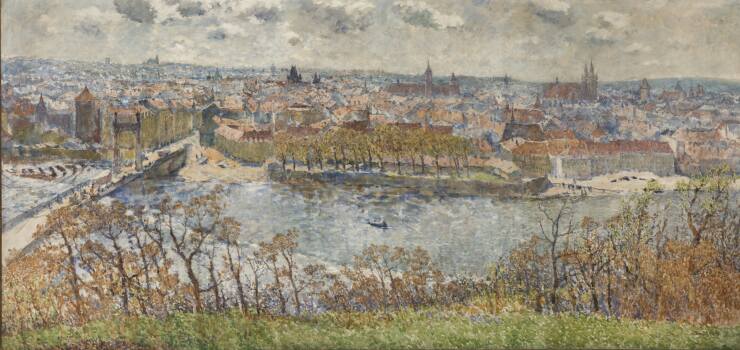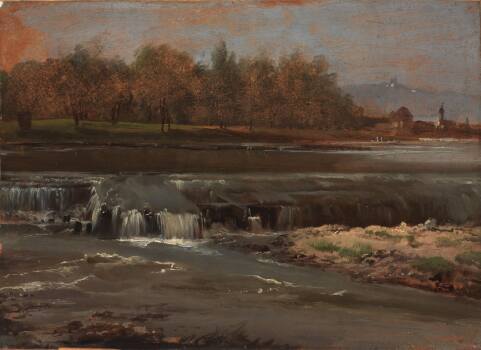On 18 November 2024, it was 140 years since the law was passed that incorporated the independent municipality of Holešovice-Bubny into Prague as its 7th district. To mark this anniversary, the National Gallery in Prague, in collaboration with the Prague 7 City District, has organised an exhibition showcasing over one hundred paintings, prints, drawings, sculptures, and architectural plans held in the NGP’s collections. These works present various views of Prague 7 throughout the 19th and 20th centuries.
The National Gallery in Prague’s connection to Prague 7 goes back 120 years, as its predecessor, the Modern Gallery of the Czech Kingdom, was established in 1902 by Emperor Franz Joseph I and, from 1905, was housed in the Wiehl Pavilion. This pavilion was originally built for the Jubilee Exhibition of 1891 at the Exhibition Grounds (Výstaviště). In 1939, plans were approved for a State Gallery building on Letná Hill, designed by Josef Gočár, but construction was halted by the outbreak of World War II. Interest in a new building for the National Gallery’s modern art collection resurfaced during the 1960s and 1970s, but these plans were ultimately replaced by the acquisition of the Trade Fair Palace (Veletržní palác). After a long reconstruction following a fire in 1974, this building finally opened in December 1995, becoming home to the National Gallery’s Collection of Modern Art.
The heart of the exhibition is a collection of works by Antonín Slavíček (1870–1910), who lived on Dobrovského Street and captured the character of Letná and Holešovice at the beginning of the 20th century in numerous studies, paintings, and in his monumental view of Prague from Letná (185.5 × 390 cm), which is considered a key piece of Czech modern art. Iconic 19th-century works are also on display, such as Thursday in Stromovka Park by Viktor Barvitius, as well as lesser-known pieces by Antonín Karel Balzer, Jan Minařík, Miloš Jiránek, Karel Boháček, Miloslav Holý, Arno Naumann, Karel Müller, Hermína Melicharová, Linka Procházková-Scheithauerová, and others, which evoke the bygone character of Holešovice-Bubny.
Prague 7 also became home to two unique works in sculpture and painting, with preparatory studies preserved in the National Gallery’s collections: the monument to Joseph Vissarionovich Stalin by Otakar Švec, which stood on Letná from 1955 to 1962, and the still-existing but largely forgotten panorama of the Battle of Lipany, created by Luděk Marold for the Architecture and Engineering Exhibition of 1898. This connection between Prague 7 and the National Gallery’s collections is unique compared to other parts of Prague; no other Prague district could host an exhibition of this kind.
1—1 / 5












